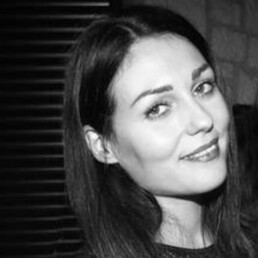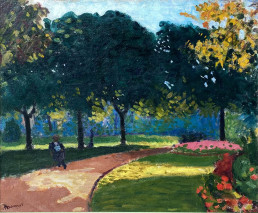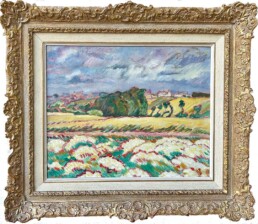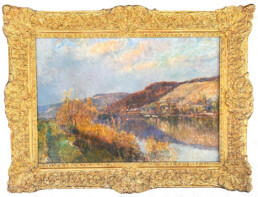Galerie Hurtebize presents three emblematic modern paintings on the theme of the seasons, by Albert Lebourg, Albert Marquet and Louis Valtat.
Three artists associated with the École de Rouen or the École de Paris, each representing a key moment in the artistic evolution of the late 19th and early 20th centuries. Through these Impressionist, Fauvist and Post-Impressionist works, a whole vision of nature, light and time is expressed.
Albert Marquet – Jardin du Luxembourg, 1902
Birth of Fauvism - Springtime in vivid colors
A member of the École de Paris, Albert Marquet (1875-1947) belonged to the first generation of Fauves, although he differed from them in his personal restraint.
Painted in 1902, Jardin du Luxembourg was part of a pivotal phase: the artist, still influenced by the Nabis and his teaching at the École des Beaux-Arts alongside Matisse, was gradually moving towards a formal simplification that heralded the principles of Fauvism. Unlike his more flamboyant Fauvist companions, Marquet chose a vivid but measured palette, where each color structures space without ever dominating the composition. The artist subtly balances the construction of form and the brilliance of color, creating a scene that is both immediate and timeless. Through this urban landscape, Marquet imposes a poetic tranquility, characterized by diffused, controlled light, which transcends the moment to create a soothing vision of everyday life.
This work is both rare and precious, as Marquet would later turn to more pared-down compositions in pastel tones, in which color would become more suggestive than structuring.
This painting thus bears witness to a turning point, when the Nabis heritage intersected with a nascent modernity, typical of the spirit of the École de Paris.
Louis Valtat – Champ de fleurs blanches et rouge en Normandie, 1924
Postimpressionism - An expressive vision of summer nature
Louis Valtat (1869-1952), a member of the École de Paris, occupies a special place between the last fires of Impressionism and the bold Fauves. A friend of Bonnard and Vuillard, from the late 1890s he developed a personal style based on pure color, simplified forms and a decorative touch.
In this Champs de Fleurs blanches et rouges en Normandie, we find all the features of his mature period. Flowers are not painted descriptively, but as rhythmic motifs. The stark contrasts and flattened volumes evoke a stylized vision of nature, in the tradition of Gauguin or Van Gogh, but without excessive subjectivity.
Typical of French Post-Impressionism, this work combines the energy of color with a solid construction inherited from observation of the motif. Valtat demonstrates his ability to synthesize emotion and mastery in a resolutely modern language.
Albert Lebourg – Vue d’une rivière
Impressionism - Shades of autumn light
Albert Lebourg (1849-1928) was a figure of the Rouen School, a regional Impressionist movement active around the Seine at the end of the 19th century. Although less publicized than its Parisian counterparts, this school developed a particularly subtle approach to landscape, focusing on changing light, atmosphere and the poetry of the motif. The composition is masterful, and the masses of color are laid down with simplicity and balance.
Unlike his more flamboyant companions, Marquet opts for a more refined palette, where each color structures space without overwhelming it.
In Vue d’une rivière, he captures with great subtlety the banks of the Seine, enveloped in soft, changing light. The light seems absorbed by the material, and the reflections on the water suggest a peaceful autumn, observed without emphasis. Corot’s influence can be seen here, but transposed into a sensitive Impressionist vocabulary, close to Pissarro.
Lebourg works in small, juxtaposed brushstrokes, capturing the minute variations of light on water and foliage. This work is representative of Norman Impressionism, where the sincerity of perception prevails over the quest for the spectacular.
Three seasons, three masters, three paintings to discover
By bringing together these three works, Galerie Hurtebize highlights the diversity of views on nature between 1880 and 1930, within the main French artistic movements: Impressionism, Post-Impressionism and Fauvism. Each painting reflects a specific moment in the history of modern art.
These works are currently on view at the gallery. Please contact us to find out more or to arrange a private viewing.

Céline FERNANDEZ
With 15 years' experience in marketing and communications, Céline has worked for major companies such as Hopscotch, Groupe Galerie Lafayette and several communications agencies. For more than 4 years, she has been managing the gallery's communications through the website, social networks and traditional media.




